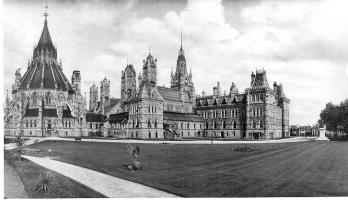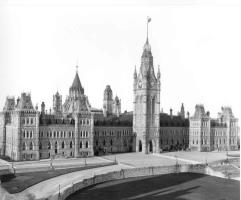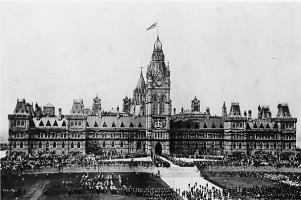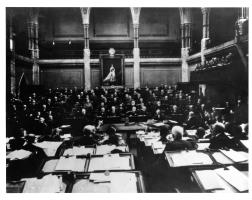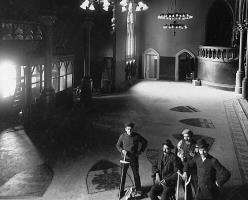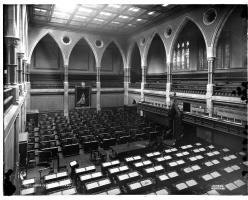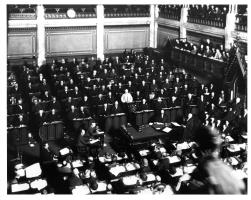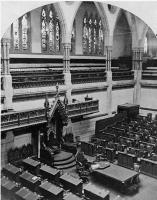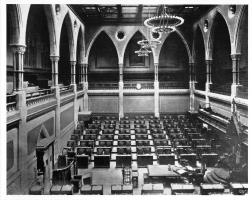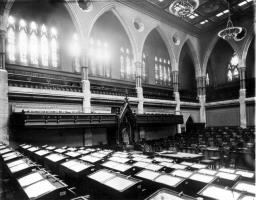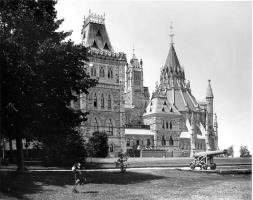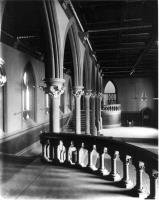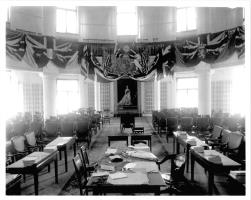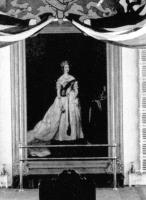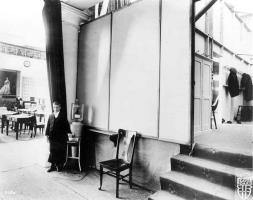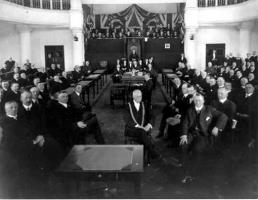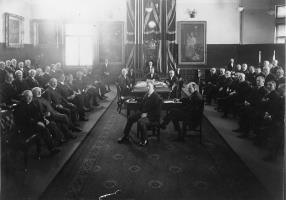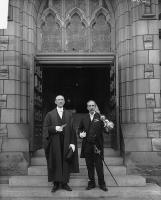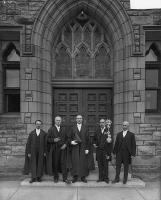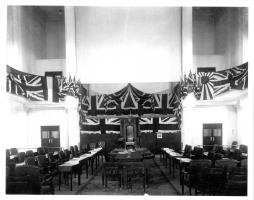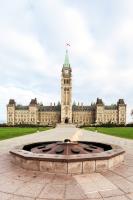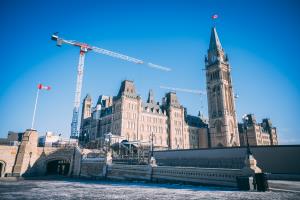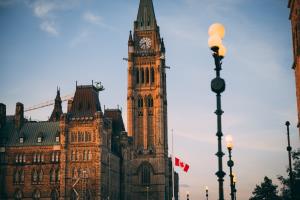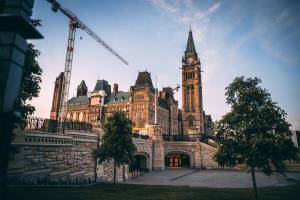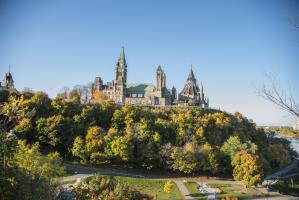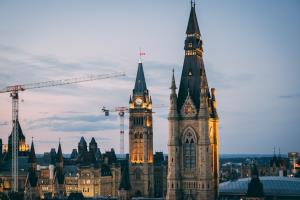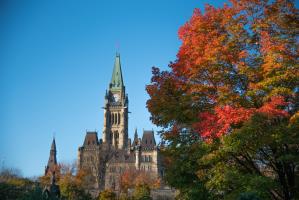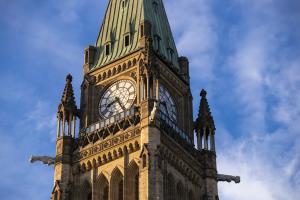Original Parliament Building
"I know no modern Gothic,” the English writer Anthony Trollope wrote of Canada’s original Parliament Buildings, “purer of its kind or less sullied with fictitious ornamentation.”
The structure had seemed destined to be built in the larger centres of Montreal or Toronto, until Queen Victoria chose Ottawa as the capital of Canada, as it was further from the American border.
On August 29, 1859, it was announced that Thomas Fuller and Chilion Jones would be the architects for the original Parliament Building. Their design addressed the need for two legislative chambers, offices, a library, committee rooms, reading rooms, an office for the Clerk, a picture gallery and the Speaker’s apartment.
Thomas Stent and Augustus Laver were awarded the contract for the Eastern and Western Departmental Buildings.
The first stone—locally sourced Nepean sandstone—was laid in the spring of 1860, and materials included red sandstone, Ohio freestone, and grey and green slate. The building was completed in 1876-77, when the new Dominion of Canada was almost a decade old.
As the nation grew so did its seat of government, and various additions were made to the building. Then, on February 3, 1916, a fire consumed the Parliament Building and forced elected and government officials to flee through thick smoke. Only the Library of Parliament, with its fireproof iron doors, survived.
